Spermine protects mice against lethal sepsis partly by attenuating surrogate inflammatory markers
- PMID: 19593412
- PMCID: PMC2707519
- DOI: 10.2119/molmed.2009.00062
Spermine protects mice against lethal sepsis partly by attenuating surrogate inflammatory markers
Abstract
The pathogenesis of sepsis is partly attributable to dysregulated inflammatory response mediated by pathogen-associated molecular patterns (PAMPs) (for example, endotoxin) and damage-associated molecular patterns (DAMPs) (for example, high-mobility group box 1 [HMGB1]). An endogenous ubiquitous polyamine, spermine, inhibits endotoxin-induced cytokine release in vitro, but its capacities to attenuate sepsis- and HMGB1-induced inflammatory responses was previously unknown. We thus tested the hypothesis that spermine protects mice against lethal sepsis by attenuating sepsis-induced local and systemic inflammatory responses. Intraperitoneal (i.p.) administration of spermine (10 mg/kg, twice daily, for 3 d) conferred a significant protection against lethal sepsis. The protective effects were associated with a significant reduction in peritoneal and serum levels of several surrogate markers of sepsis (for example, Interleukin-6 [IL-6], keratinocyte-derived chemokine [KC], monocytes chemoattractant protein-1 [MCP-1], macrophage inflammatory protein-2 [MIP-2], tissue inhibitor of metalloproteinase-1 [TIMP-1], soluble tumor necrosis factor-alpha receptor I [sTNFRI], and soluble tumor necrosis factor-alpha receptor II [sTNFRII]) during a late stage of sepsis. In vitro, spermine effectively inhibited HMGB1-induced release of the above surrogate markers in peritoneal macrophages. Thus, spermine confers protection against lethal sepsis partly by attenuating sepsis- and HMGB1-induced inflammatory responses.
Figures
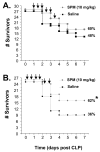
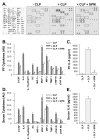
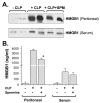
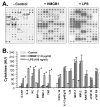
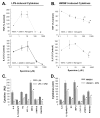
References
-
- Brightbill HD, et al. Host defense mechanisms triggered by microbial lipoproteins through toll-like receptors. Science. 1999;285:732–6. - PubMed
-
- Poltorak A, et al. Defective LPS signaling in C3H/HeJ and C57BL/10ScCr mice: mutations in Tlr4 gene. Science. 1998;282:2085–8. - PubMed
-
- Hemmi H, et al. A Toll-like receptor recognizes bacterial DNA. Nature. 2000;408:740–5. - PubMed
-
- Krieg AM. CpG motifs in bacterial DNA and their immune effects. Annu Rev Immunol. 2002;20:709–60. - PubMed
-
- Wang H, et al. HMG-1 as a late mediator of endotoxin lethality in mice. Science. 1999;285:248–51. - PubMed
Publication types
MeSH terms
Substances
Grants and funding
LinkOut - more resources
Full Text Sources
Medical
Research Materials
Miscellaneous

